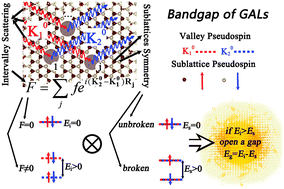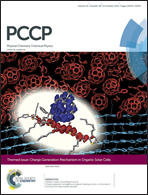Bandgap opening/closing of graphene antidot lattices with zigzag-edged hexagonal holes†
Abstract
How to predict the bandgap size of graphene antidot lattices (GALs) is a key problem in the field of graphene-based nanoelectronics. Here, we have obtained the universal rules on bandgap opening/closing of GALs with zigzag-edged hexagonal holes (ZH-GALs), as well as the means to control the bandgap size. In the simple case that the electronic property depends on the choice of the supercell, the quantitative relationship between Eg and the density/diameter of antidots is fitted. Turning to complex structures, we reveal that the bandgap opening in ZH-GALs results mainly from the intervalley scattering. In this interpretation, according to their relative position, the antidots can be divided into three categories. A relatively large bandgap appears in ZH-GALs, only when the numbers of the three categories are unequal. This could be explained based on a mechanism similar to diffraction. A formula according to the explanation is provided to estimate the bandgap, which can be used to predict the electronic properties of GALs and guide the design of semiconductor and photoelectronic devices based on GALs.


 Please wait while we load your content...
Please wait while we load your content...